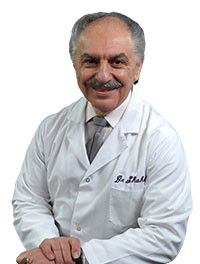Knee Osteotomy in Wyckoff, NJ

The skeletal system gives structure to our body and allows us to stand upright. Peppered throughout our skeletal system are structures called joints that allow for movement and flexibility. Hinge joints, in particular, are a type found in the knees as well as the elbows, fingers and toes. Hinge joints are like hinges in a door in that they facilitate opening and closing.
Like other joints, knee joints have built-in soft cartilage “brake-pads” to minimize friction and pain from movement that causes bones to rub up against each other. They are also bathed in extracellular fluid that is rich with hyaluronic acid, our body’s natural lubricant. Ligaments and tendons connect bones to each other and to muscles to stabilize the system. Our joints are literally “well-oiled machines” that support enormous amounts of pressure.
Overview of Knee Osteotomy
Knee joints slowly erode over time, and as the cartilage “brake-pads” wear away, osteoarthritis begins. Over time, the pain intensifies and spreads. This causes the ligaments and tendons to slightly change their positions within the joint, shifting the weight distribution and leading to pressure and pain in new areas.
If the pain gets bad enough, many patients consider knee replacement surgery, which is a routine procedure where the entire joint is replaced with a metal, plastic or ceramic model. An alternative option, a knee osteotomy, is a slight remodel as opposed to a replacement, and thus, it’s much less invasive. A knee osteotomy modifies the joint by inserting or removing a wedge of bone into the shin or the thigh. The insertion or deletion “levels the playing field” so to speak, and re-calibrates the position of the knee, relieving pressure and pain. A knee osteotomy will only work if the arthritis is unilateral, or on one side.
Knee osteotomies involve far less construction than replacements because the joint itself is minimally modified. Prime candidates for knee osteotomies are active individuals under 70. A knee osteotomy can usually delay the need for a joint replacement for several years and delay the progress of osteoarthritis in the knees.
What to Expect from Knee Osteotomy Surgery
A knee osteotomy will require general or spinal anesthesia. Your surgeon will ask you to fast prior to surgery; typically, fasting begins the night before surgery. Your surgeon will discuss these pre-op instructions with you prior to your surgery day.
There are two types of knee osteotomies:
- High Tibial Osteotomy is the more common type of osteotomy procedure and involves altering the top of the shinbone (tibia) to correct a bowlegged alignment (stress on the inside of the knee). In this type of osteotomy, a wedge of bone from the tibia is removed, creating a space. When space is closed, the joint will realign.
- Femoral Osteotomy involves altering the bottom of the thighbone (femur) and is performed on patients with knock-kneed alignment. In this type of osteotomy, a portion of the femur is removed in order to level the joint.
In either case, your surgeon will make a 4-5 in incision in the front of the knee. Depending upon the needs of your knee, your surgeon will either remove or insert a wedge of bone, securing the knee with metal plates and screws to hold the bones in place.
Both procedures last between one and two hours. After the procedure you will likely spend a few days in the hospital for inpatient monitoring. Pain management is critical immediately following surgery and your healthcare provider will work to make you comfortable and to reduce any swelling. Your knee will likely be placed in a brace or cast to keep it protected while the bone heals.
Knee Osteotomy Recovery
Recovery from a knee osteotomy procedure varies; full recovery can take as long as a year. Your recovery plan will likely include:
- Crutches to ease pressure
- Knee stretching and exercises to prevent scar tissue from restricting mobility
- Physical therapy to build muscle strength
- Frequent follow ups to assess progress
Your healthcare provider will continue to track your progress during recovery. Typical progress should be:
- 1-2 weeks post-surgery: ability to straighten and bend knee at a 90 degree angle
- Around 8 weeks: patients typically transition out of crutches while still performing knee exercises
- 3-6 months: ability to walk normally
- High impact exercise like jogging may not be tolerated until after 12 months of recovery
As with all surgeries, there are risks involved. Your healthcare provider will discuss these with you prior to any surgical procedure. Request more information about a knee osteotomy today. Call (201) 806-6099 or contact Dr. M.T. Shahab online.
Medwell Orthopedics & Functional Medicine for Men & Women
Address
33 Central AveMidland Park, NJ 07432
(201) 806-6099
www.BergenCountyDoctors.com
Hours
Mon:
8:00 am - 8:00 pm
Tue:
2:00 pm - 7:00 pm
Wed:
8:00 am - 6:30 pm
Thu:
8:00 am - 1:00 pm
Fri:
8:00 am - 6:30 pm
Sat:
9:00 am - 1:00 pm
Sun:
By Appointment Only


